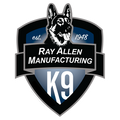K9 Spotlight: K9 Rescue Simulator w/ NARS
Oct 20th 2021
The last thing K9 handlers want to think about is their dog being injured in the line of duty. But police and military personnel need to know how to respond in an emergency situation. That’s why North American Rescue Simulation (NARS) developed the K9 Trauma Simulator; the world’s first, and only, K9 service dog manikin designed to teach handlers how to respond to their dog’s needs during medical trauma in the field.
The Only K9 Trauma Simulator You Need
The NARS K9 Trauma Simulator is a wirelessly operated point of injury care simulator that replicates common emergencies working dogs may encounter on the job. Weighing approximately 63 pounds, mimicking the size and weight of a Belgian Malinois, this K9 manikin breathes, bleeds, barks, and whines just like a real dog.
The K9 medical training system comes with five life-like interchangeable limbs replicating broken bones, blunt force trauma, puncture wound, and other injuries that a working dog may sustain in the field.
NARS’ K9 manikin is the only system handlers and first responders need for K9 medical training. And with practice, professionals will know what to do when disaster strikes.
“We believe in taking training outside of the classroom into the environment that working dogs and their handlers are going to be operating in” Adam Reading, Director of Sales at North American Rescue, said. “That’s where the accidents are going to occur, and that’s where this medical training and skill acquisition needs to be perfected.”
Technologically Advanced
The manikin makes K9 first aid course training easy for instructors with the MilSpec tablet that controls every aspect of the system from several hundred yards away. With the push of a button, an instructor can make different appendages bleed, manipulate the manikin’s breathing, and simulate an injured working dog's head movements and noises.
Instructors are also able to provide real-time performance evaluations on the tablet’s software. Students will know what they’re excelling at and what they need to improve.
From applying hasty tourniquets and inserting needles to putting on muzzles, handlers will be qualified to tackle any emergency field surgery after completing the course.
“Hesitation is the largest and most profound impact on the success or failure of an injury or an incident like this,” Reading said. “It’s a matter of time before something happens, and unfortunately, many handlers suffer from a lot of guilt because they didn’t know what to do and they weren’t properly equipped.”





